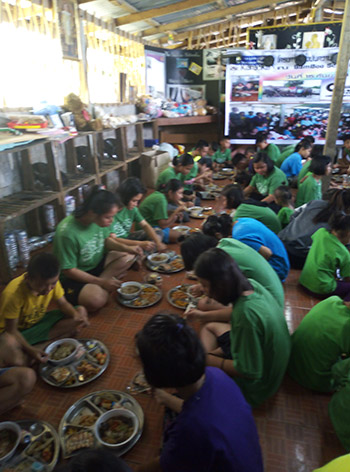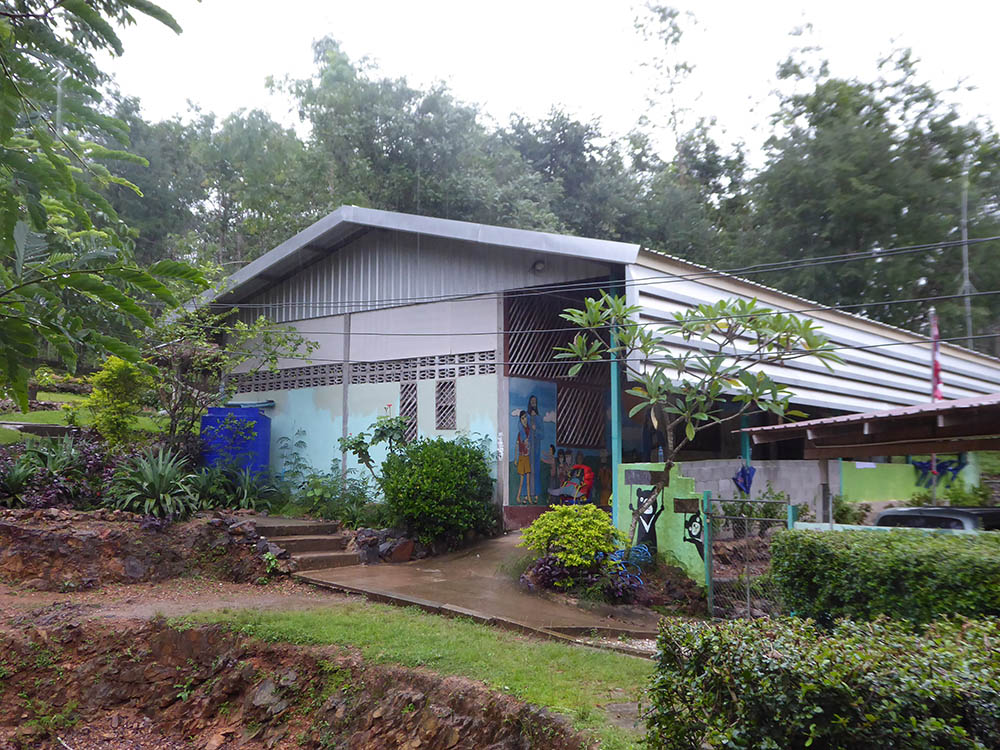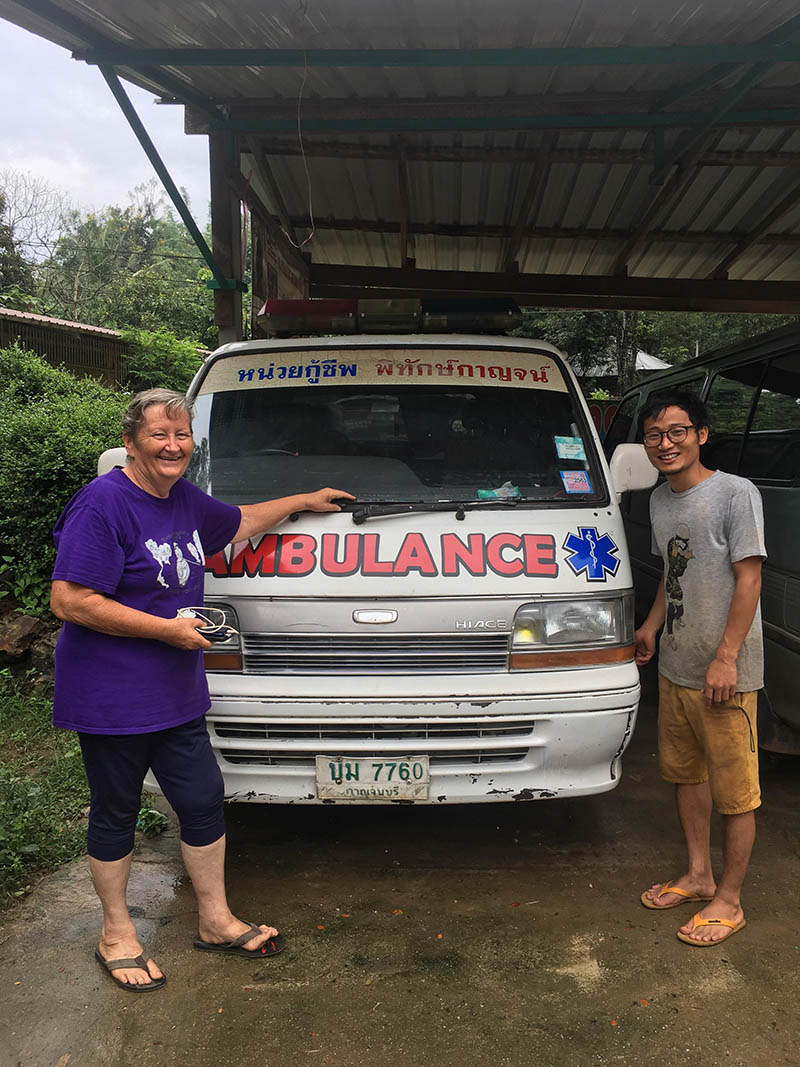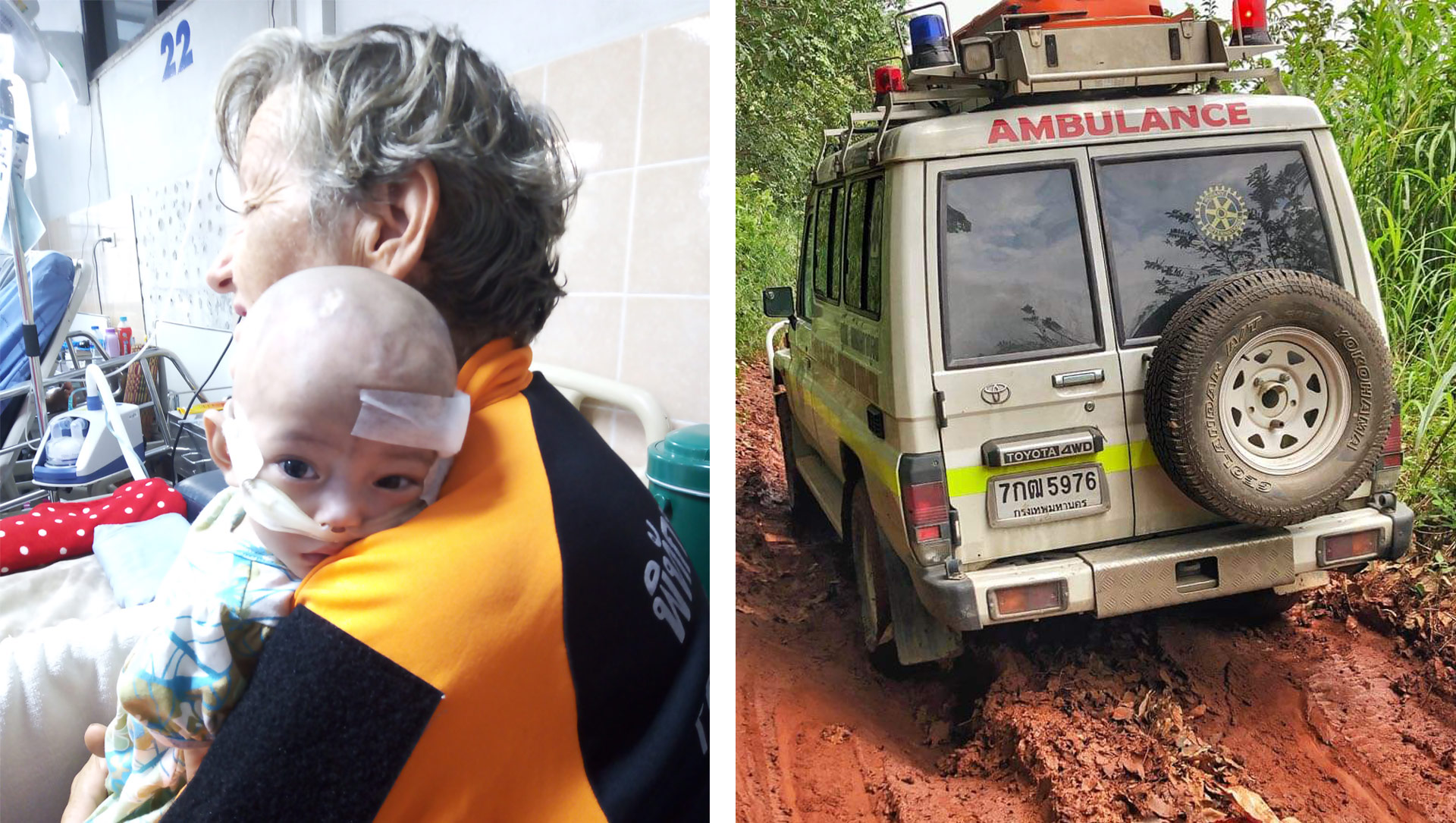Siriwan was 8 when she and her brother left their home in Myanmar’s troubled border region when their father needed medical attention. By 13, she had completed first-responder training at a school in a remote corner of Thailand. Now, 20, she spent her teenage years rushing people to hospital in a region far from medical services.
Siriwan is a pupil at the Bamboo School – a refuge for children who have been orphaned, abandoned, abused or affected by medical conditions. Many come from across the border in Myanmar, an area afflicted by conflict and bereft of opportunity.
“I help translate from Karen into Thai and English, let the hospital know we’re coming, and work in the back. I deliver CPR, staunch wounds or whatever’s necessary. It’s exciting. I can be tired for school the next day, but I’m used to it,” Siriwan told me. She hopes to go on to a career in paramedics when her schooling is complete.

Siriwan’s peers at the Bamboo School attend full-time Thai government education, but many of them also volunteer to help run the only ambulance service in this isolated area. What’s more, the experience has led some pupils from destitution to careers as medical professionals.
The woman shepherding these youth from strife is Catherine Riley-Bryan. She’s helped nearly 500 young people since starting out in 2000. The 70-year-old educator – also the ambulance driver – reasons that far from being traumatic, there’s much for her students to gain from what are sometimes intense experiences.
“Many of these kids, especially those whose families have been attacked by the military in Myanmar, have been through hell and back, so getting onto an ambulance and keeping a person alive is empowering. They’re enthusiastic: especially if it’s a baby being born. I pick and choose who’s involved depending on their characters,” Riley-Bryan said.
Far from help
I’m an hour’s drive west of Kanchanaburi near the remote Karen village of Bong Ti and only a kilometer from the border with Myanmar. Located south of Thailand’s Erawan and Sai Yok national parks, the school is surrounded by thick forest.
There were 64 children staying the night I visited to find out more.
A blackout caused by the heavy rain didn’t bother the children, and candles were quickly lit. Sheltering under a bamboo canopy, Riley-Bryan explained how she established not only the school, but also its clinic and vital ambulance service.
“Originally, I came to help children with no families and no formal documents. Having no identification means they aren’t enrolled in school and are out working,” she recalled, “but I soon became aware of a huge medical need.”
“Newly born babies were bleeding to death – their umbilical cords cut so short that they couldn’t be tied. There were no midwives and no medical facilities. In my first year I saw 81 unnecessary deaths including people with TB, malaria and complications caused when minor difficulties go untreated.”
It’s more important to save a life than argue about 500 baht, and if we didn’t pay, treatment would be withheld.
Described as a superwoman by the children she cares for, Riley-Bryan is a trained midwife and paramedic, previously working in disaster relief New Zealand’s civil defense force. “Momo Cat,” as the children call her, spoke with gentle pride about her efforts and clarity about the challenges she’s faced:
“People lacked basic knowledge of healthcare and wouldn’t attend hospital because they couldn’t speak Thai and had no money for transport. I organized a temporary clinic with volunteer doctors from Bangkok’s Mission Hospital. We had 200 patients in the first two days.”
This led Riley-Bryan to build a small medical facility next to the school in 2008. It quickly became popular.
“Once we’d saved two or three people, word got around and anybody with any little thing came,” she said.
If a patient needed hospitalization; a car would be hired to drive them 23 kilometers to the town of Sai Yok. Those THB600 (US$20) trips were unaffordable to people whose incomes, Riley-Bryan said, average less than THB6,500 (US$210) annually. In 2009, the New Zealand Rotary Club funded the Bamboo School’s first ambulance, a Toyota Hiace.
“It’s done 500,000 kilometers and is still going strong. We have a larger Toyota Prado; a government donation from Fraser Island in Western Australia. It’s equipped for distance and water,” Riley-Bryan added. A minibus to transport the walking wounded and a pickup truck carrying emergency equipment road-blocking equipment like traffic cones and barricade tape complete the fleet.
The service is free, though there are hospital bills to consider.
“The patients often have nothing – so we pay up. They promise to return and work for us,” Riley-Bryan said. “Some of them do; some of them we never see again. It’s more important to save a life than argue about 500 baht, and if we didn’t pay, treatment would be withheld.”
What happens when an emergency call comes in?
“I run down to the ambulance. Pull on the uniform and gloves. Start up the engine and drive,” she said, adding that can mean upward of 10 calls on a busy night.
Fortunately, she does not do things alone; she’s always accompanied by her young volunteers.
At age 12, all pupils complete Emergency First Responder courses provided by the Pittakarn Foundation, which supports the school’s ambulance service. Interested children take turns to be nominated for ambulance duty and sleep in their clothes so they’re ready to go straight away in an emergency.
They’re soon putting those skills to work measuring blood pressure, administering oxygen and dealing with bleeding wounds.
Call-outs vary from snake and dog bites to agricultural accidents as well as cases of domestic violence. Motorbike and other traffic accidents are common. Riley-Bryan remembered a truck taking a corner too fast and overturning, leaving two dead and 12 injured.
The driver and his accomplice ran off. Those seriously hurt went in the ambulance and the minibus took the others.
The accident victims were girls between 12 and 14 from Myanmar, no so different from many of the students. With a former Bamboo School student translating, the police discovered the girls had each paid THB7,000 ($230) to be brought to Thailand to work – as prostitutes, Riley-Bryan feared.

No longer victims, but heroes

Mowai Apisuttipanya, who considers the Bamboo School home, has done many miles in the ambulance. He and his family left Myanmar in 1997 after the Burmese military launched an offensive against his village. Being ethnically Karen, they were stateless – citizens of neither Myanmar nor Thailand.
Initially settling in a refugee camp, the family later set up home near the Bamboo School and at 14 he began assisting Riley-Bryan as a translator, jumping in every time the ambulance went out. He was one of Riley-Bryan’s young assistants motivated to do more by the horrifying things they saw.
The 32-year old recounted riding in the back of the ambulance; holding a baby with late-stage cerebral malaria.
“She was suffering from convulsions, and I did not know what to do. I watched her die. I thought: If I had more knowledge, if I became a doctor, I could have helped.”
A visiting American anesthesiologist found out about his wish and suggested a sponsorship.
“I had no real plan, no money, so I said why not? Praise God,” Apisuttipanya said, who like many Karen, has a Christian background.
After 14 years of hard work and support from his sponsor, Apisuttipanya is now a fully licensed medical doctor working in Bangkok. He’s also a Thai citizen. He dreams of becoming a surgeon, and returns home to help out when he can.
Many Bamboo School pupils receive sponsorships to complete their studies, and the results are impressive. Two have become public health nurses, one of whom runs the local government clinic. Another five are now qualified nurses working at nearby hospitals. Three more former students are currently in medical school.
A focus on the success stories gets Riley-Bryan through the inevitable harder times. She says her Christian beliefs motivate and support her as well. Optimism about the future is crucial.
“If we can change our kids’ mindsets from merely surviving into actually thriving, and get them looking at how they can help others, rather than what they can grab for themselves: then they can overcome some of the problems they have inherited,” Riley-Bryan said.
The week after Coconuts visited, the school took on a 10-month-old baby, starved by her mother and abandoned at Phalhon Hospital in Kanchanaburi. Within weeks, with Siriwan’s help, the baby girl, named Kamanee, was laughing playfully. And so, another life appears to get another chance from the Bamboo School and its team of young rescuers.
There are many children and young people living at the Bamboo School who are in need of sponsorship and support to find out more visit The Bamboo School online.
Related:
Stretching themselves: How yoga helps HIV orphans flex their muscles


